The Seven Natural Wonders Of Costa Rica
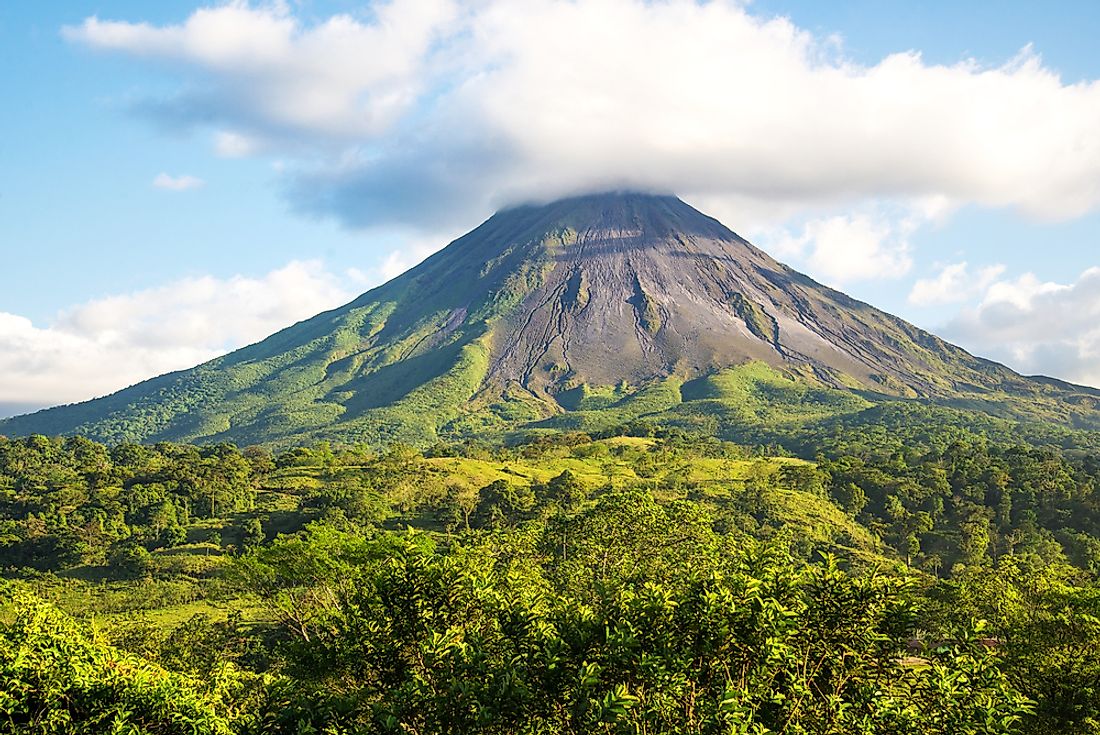
7. Monteverde Reserve (Reserva Monteverde)
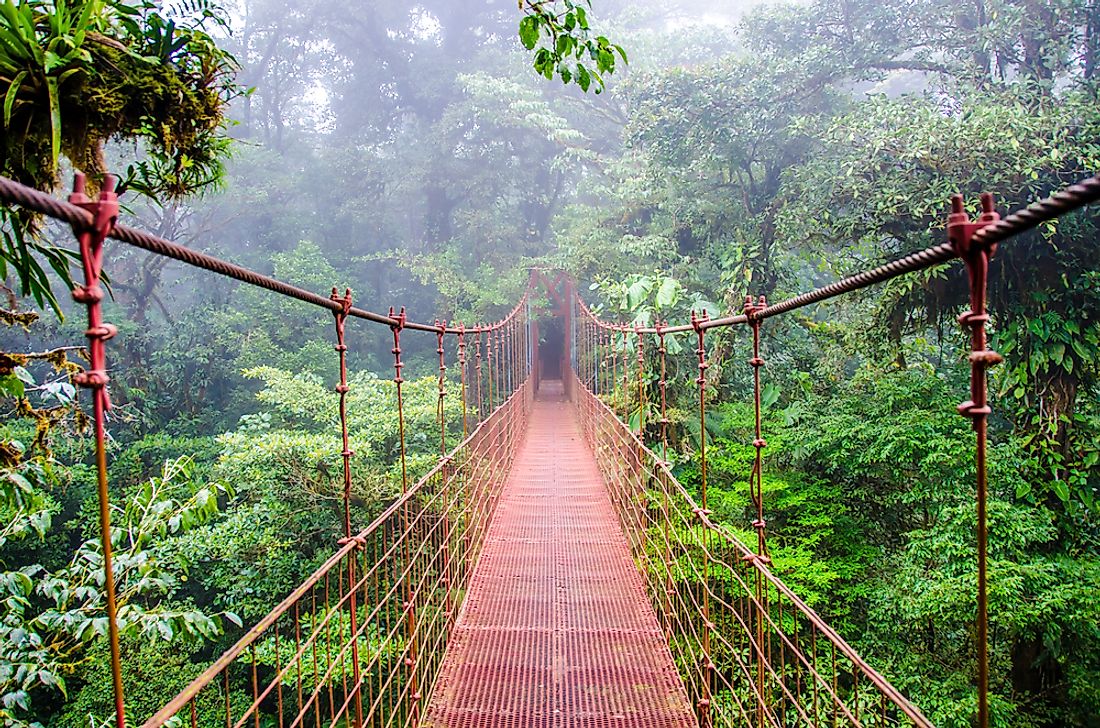
Monteverde is a small settlement located in Puntarenas, Costa Rica. The surrounding region is a major ecotourism destination and hosts several reserves including the famous Monteverde Cloud Forest Reserve. The latter has been labeled by the National Geographic as the "the jewel in the crown of cloud forest reserves.” A large number of tourists and naturalists visit the site each year. The reserve was established in 1972 and occupies an area of more than 10,500 hectares of cloud forest, covering 6 ecological zones. Over 2,500 species of plants, 100 species of mammals, 400 bird species, 120 amphibian and reptilian species, and thousands of species of insects are found in the Monteverde Cloud Forest Reserve.
6. Poás Volcano (Volcán Poás)
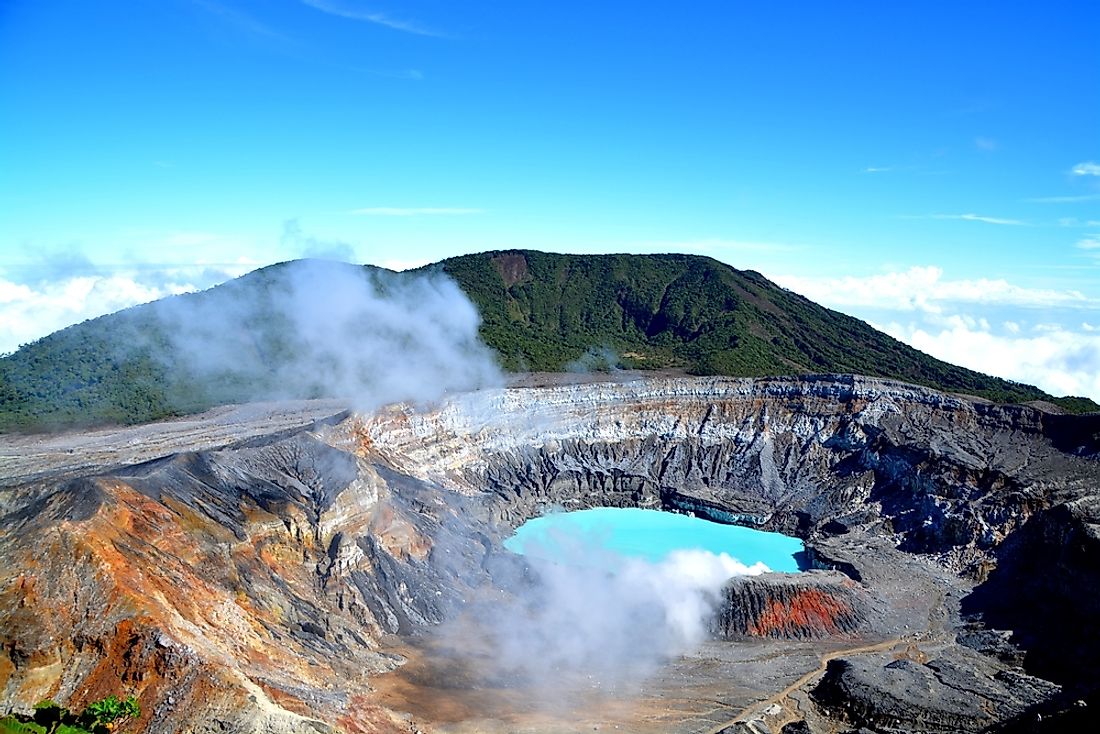
The Poás Volcano is a 2,708-meter tall active volcano located in the Poas Volcano National Park of Costa Rica. The volcano has a history of 40 eruptions since 1828 with the most recent one being in April 2017. Visitors had to be evacuated for safety purposes. There are plans to close down the national park indefinitely as a future volcanic eruption might lead to loss of life and property. The Poás Volcano has two crater lakes near the summit. The Laguna Caliente, the northern lake, is one of the most acidic lakes in the world. The pH of the lake varies with precipitation and changes in volcanic activity and is sometimes as low as 0. The region is susceptible to acid rains and acid fog that also threatens the surrounding ecosystem.
5. Tortuguero Canals (Canales de Torguero)
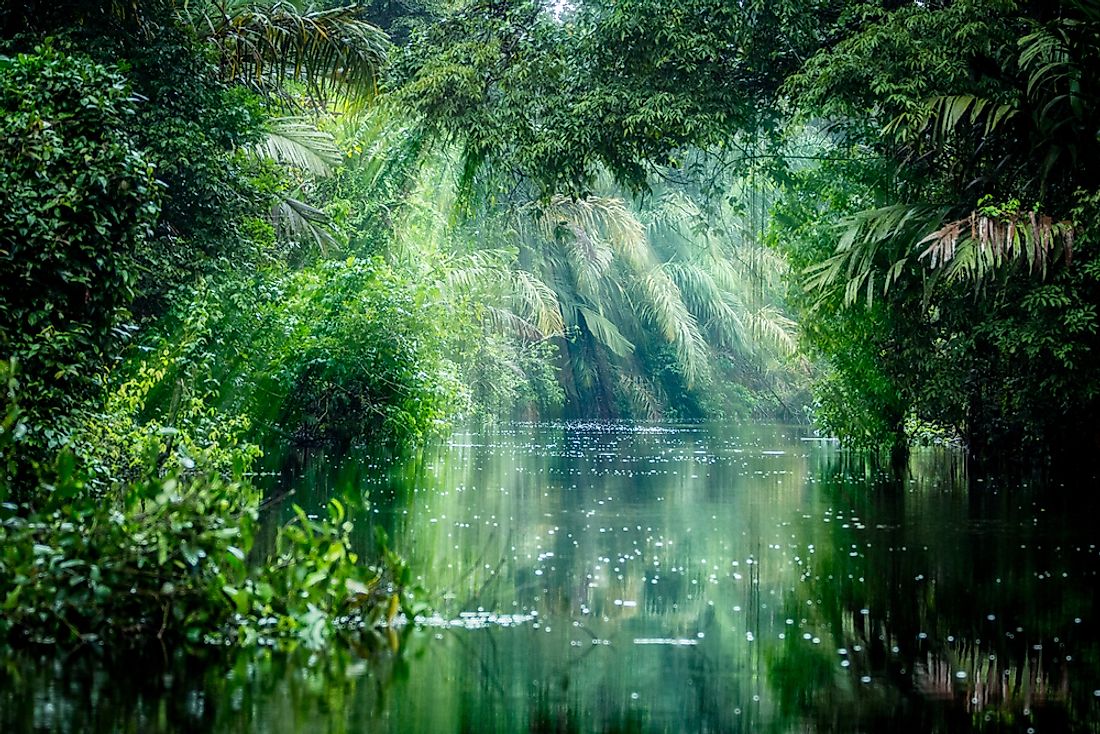
The Tortuguero National Park is a national park in Costa Rica’s Limón Province. Although the national park is accessible only by boat and airplane, it is still the country’s third most visited park. The park hosts an incredible array of flora and fauna. It features 11 different types of habitats including swamps, mangroves, rainforest, beaches, and lagoons. The region has a typical tropical climate and is warm and humid. The park is a key Ramsar wetland of international importance.
4. Celeste River (Río Celeste)
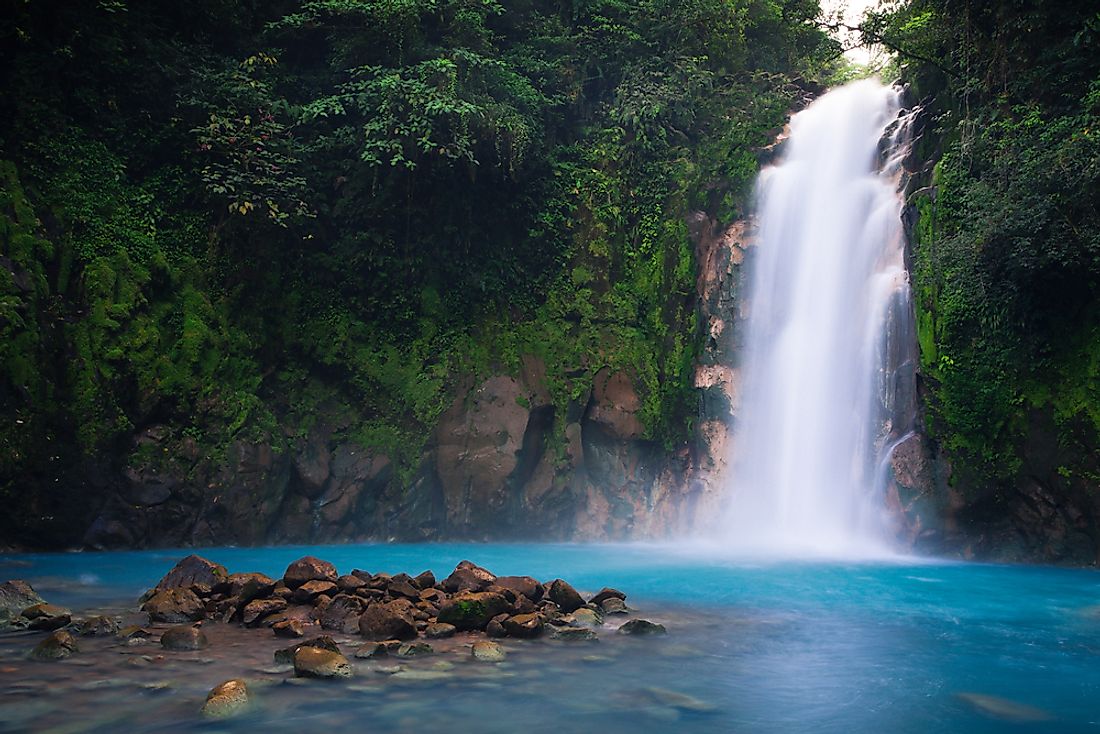
The Celeste River is part of the Tenorio Volcano National Park in Costa Rica. The river is famous for its distinctive turquoise coloration. The park features a large waterfall and several hot springs. Tourists visiting the site prefer to hike from the entrance to the waterfall. It is said a physical phenomenon is responsible for the color of the river. The Celeste is fed by two rivers: the Buenavista River and the Sour Creek. The former carries aluminosilicate particles in large concentration while the latter is highly acidic. When the two streams mix, the pH drop triggers the aggregation of the aluminosilicate particles which then produce Mie scattering that lend the turquoise color to the Celeste River.
3. Chirripo Mountain (Cerro Chirripó)
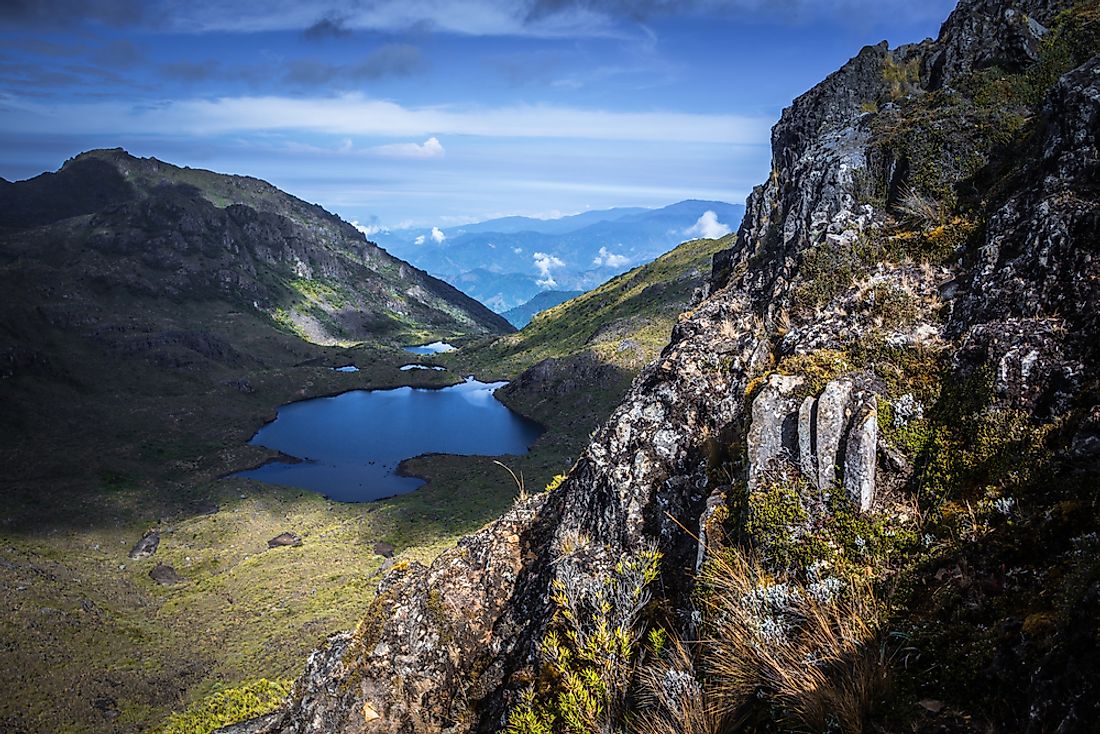
The Cerro Chirripó is Costa Rica’s highest mountain and is located at an elevation of 12,533 feet. The mountain is part of the Chirripó National Park and hosts significant areas of Costa Rican Páramo and the Talamancan montane forest. High levels of endemism and biodiversity exists here. The peaks of these mountains act like sky islands for the region’s indigenous flora and fauna. On clear days, the mountain offers panoramic views of the entire country from the Pacific coast to the Caribbean Sea coast. The Cerro Chirripó can be climbed with a special permit from the National Park office in San Gerardo de Rivas.
2. Arenal Volcano (Volcán Arenal)

Arenal Volcano is an active stratovolcano located in the Alajuela province of Costa Rica. The volcano is 5,358 feet tall and has a crater with a diameter of 460 feet. The volcano is 7,500 years old and that makes it a relatively young volcano on the geological time scale. The dormant volcano exhibited an unexpected eruption in 1968 that destroyed the town of Tabacón and resulted in the formation of three more craters. The volcano is currently in a dormant state again. It was one of the ten most active volcanoes in the world until 2010. The Arenal Volcano is the central feature of the Arenal Volcano National Park. The volcano serves as an important watershed for the Arenal Lake Reservoir. The water of the reservoir is used to produce hydroelectric power.
1. Cocos Island (Isla del Coco)
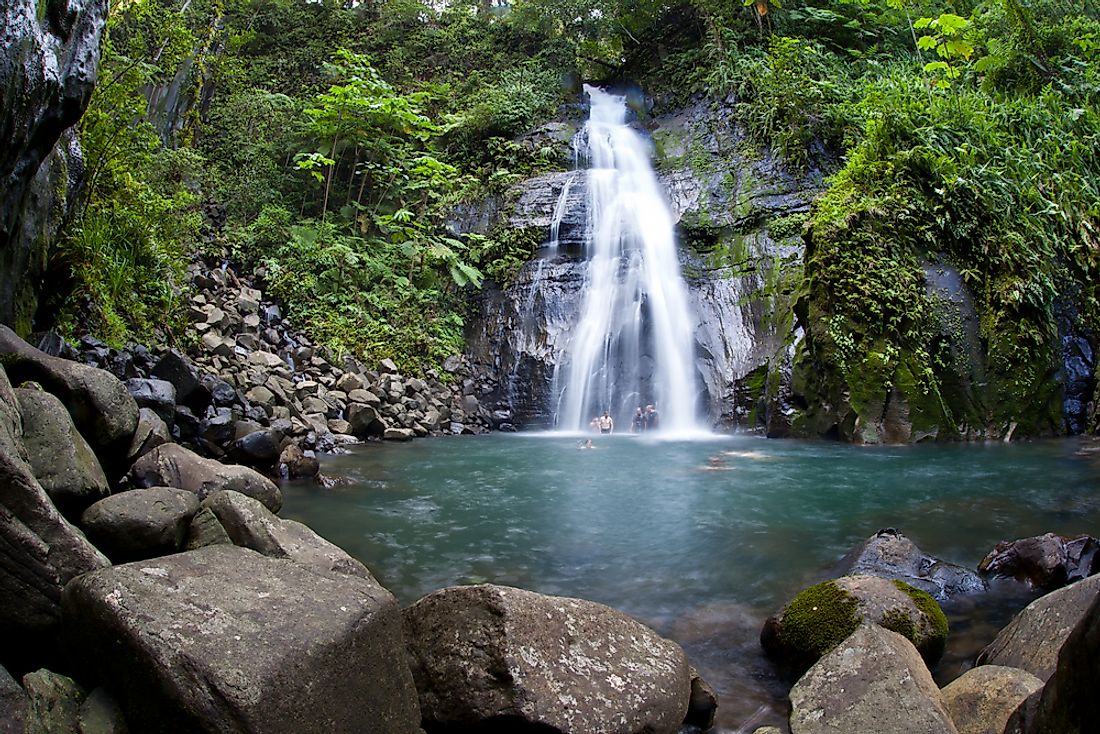
The Cocos Island is a famous island located off the coast of Costa Rica in the Pacific Ocean. The island is designated as a national park and no settlements are allowed here. Only the Costa Rican Park Rangers are allowed to live on the island. The island has a roughly rectangular shape and is about 23.85 square km in size. The waters surrounding the island are extremely popular among scuba divers. Here, the divers can explore the ocean and its rich aqua flora and fauna. Hammerhead sharks, dolphins, rays, and other notable marine species reside in the waters off the shore of the Cocos Island.







